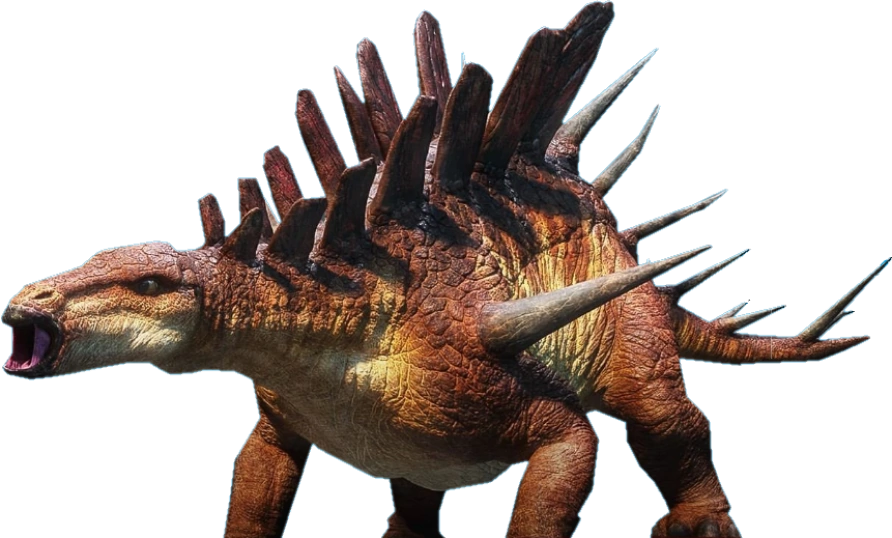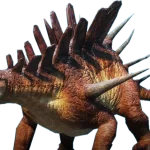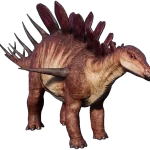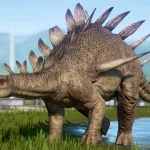“The Kentrosaurus is another of those spikey-backed dinosaurs. A dinosaur that relied on intimidation to keep predators at bay. And failing that, a difficult meal to catch and chew. Think of it as a prehistoric porcupine.”
– Isaac Clement
Kentrosaurus (meaning “pointed lizard”) was a small member of the stegosaur family. It had 9 pairs of plates on its neck, shoulders, and back, and 5 pairs of long, sharp spikes above its hips and along its tail. Kentrosaurus also had a long spike on each of its hips (some paleontologists think that it also had these spikes on its shoulders).
Two composite skeletons of Kentrosaurus were assembled from hundreds of bones quarried by German paleontologists between 1909 and 1912 in Tanzania. It was named by Edwin Hennig in 1915. The Tanzanian quarry geology indicated Kentrosaurus lived near a large river. It is therefore thought that it fed on lush, low-growing vegetation along the riverbank. So many Kentrosaurus bones were found in this quarry that scientists believe that at least 70 must have perished at the site. This also suggests that Kentrosaurus lived in herds.
Kentrosaurus was found in the same quarry as the famous Berlin Brachiosaurus. Unfortunately, one of the two existing Kentrosaurus skeletons was destroyed by an Allied bombing raid on Berlin during World War II.
urassic World Camp Cretaceous Roar Attack Kentrosaurus Dinosaur Action Figure, Toy Gift with Strike Feature and Sounds DNA Scan Code.


Name Meaning
Diet
Lenght
Weight
Pointed lizard/reptile
Herbivorous 🌿
4.5-5.5 meters (15-18 ft)






